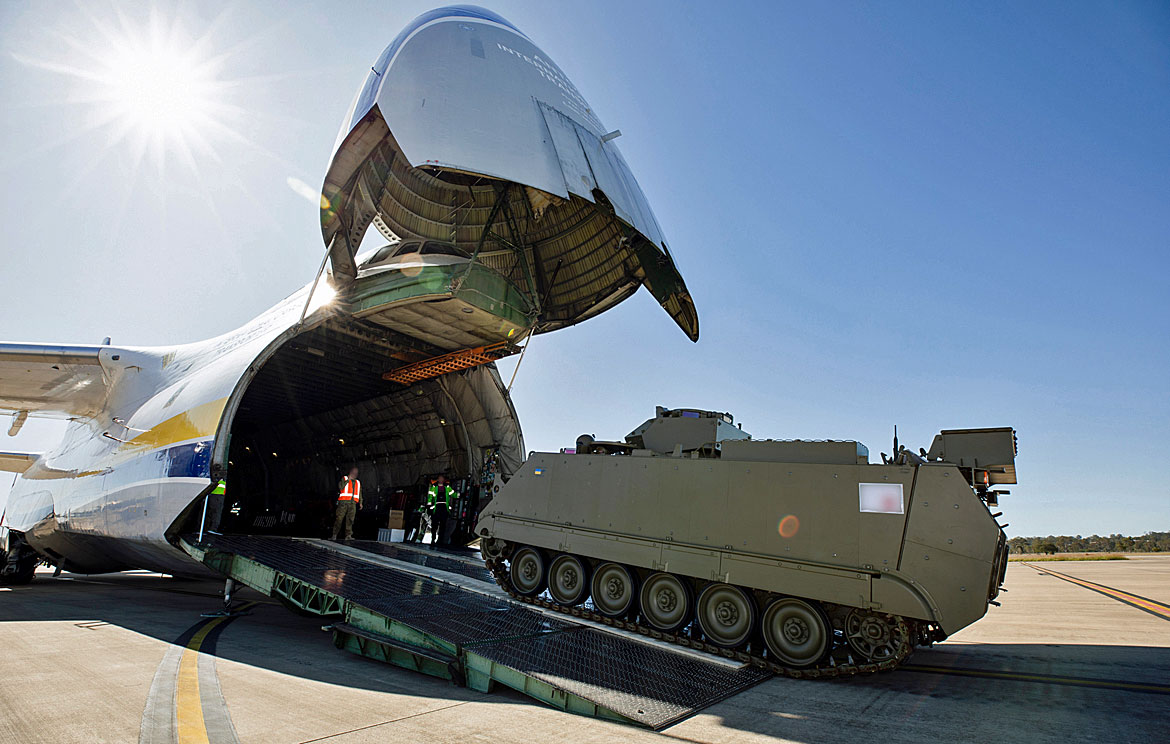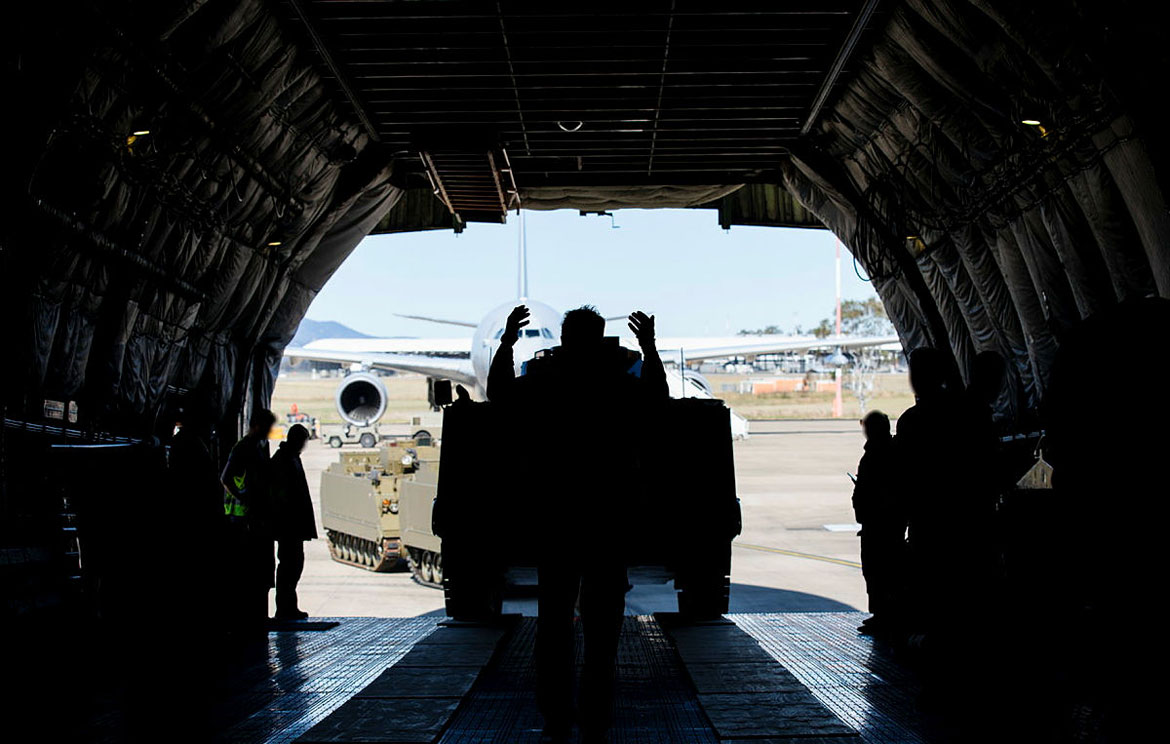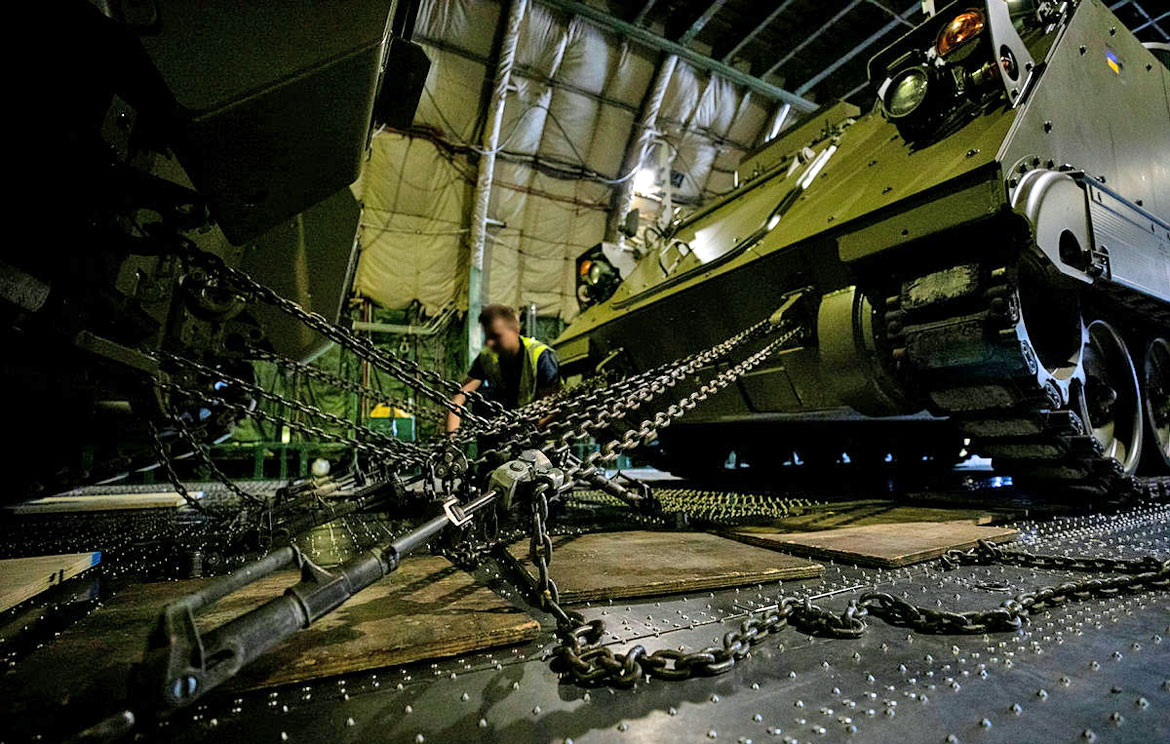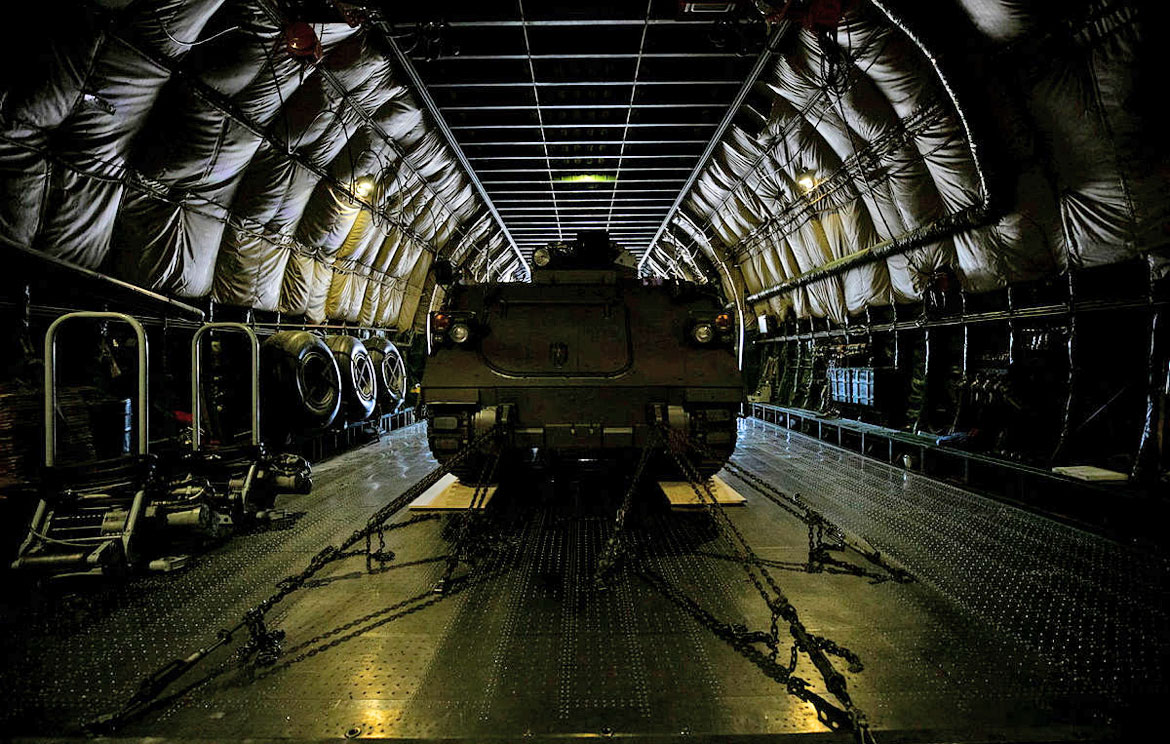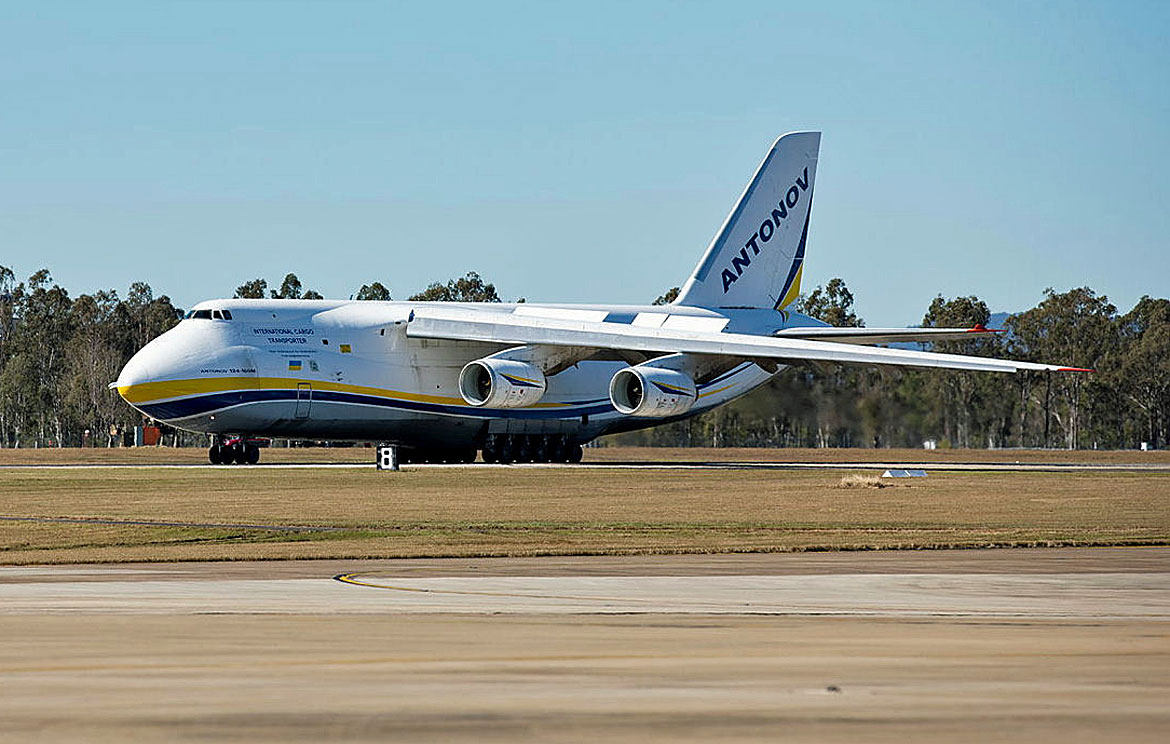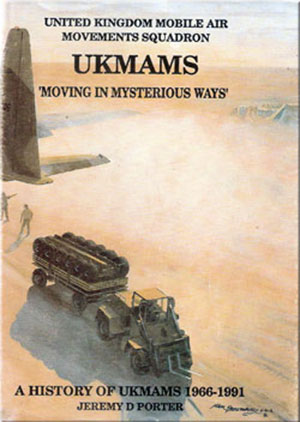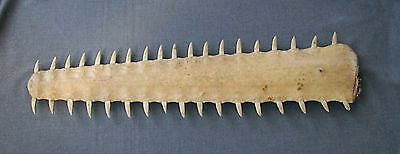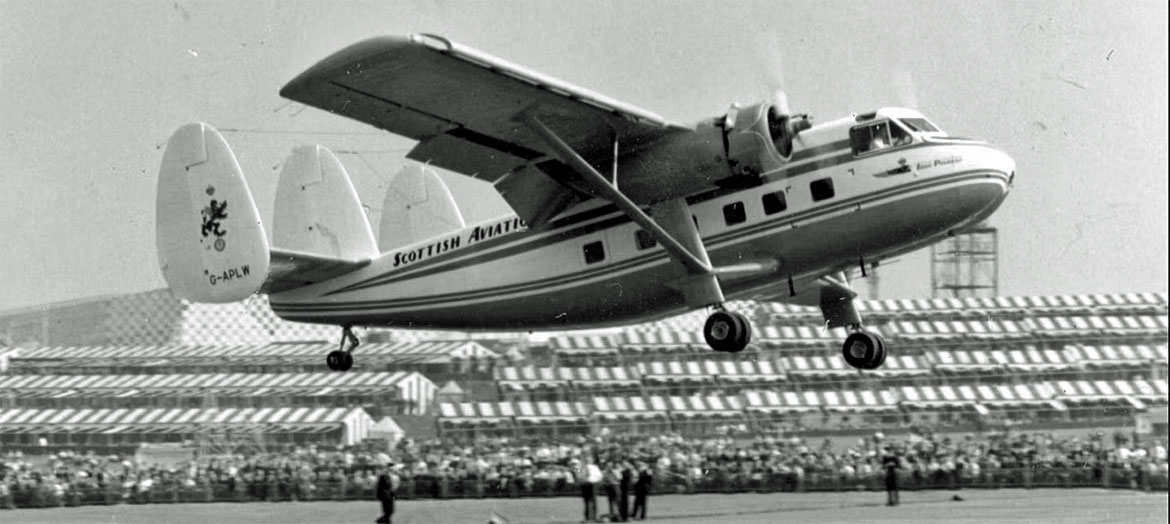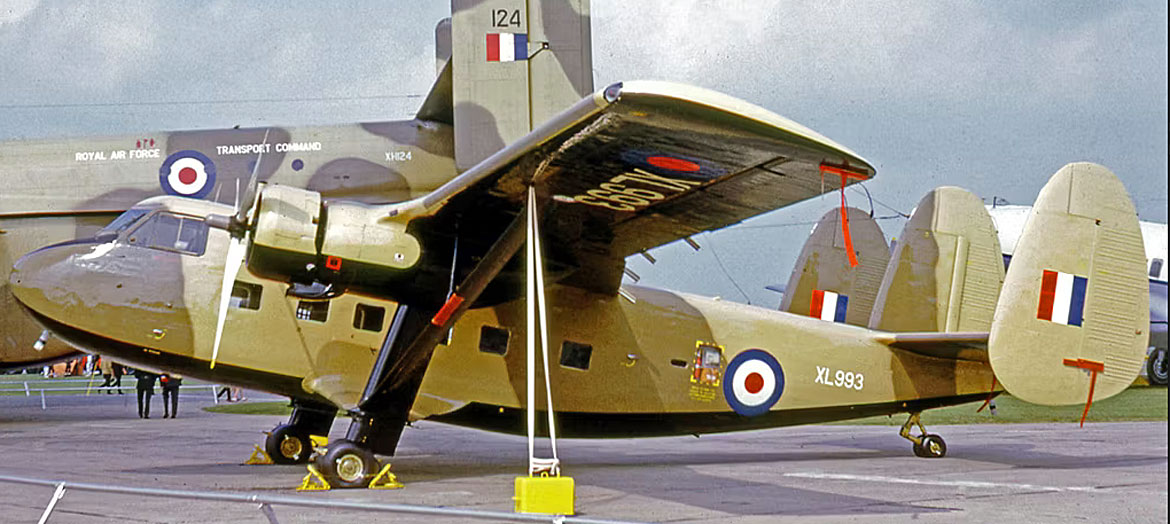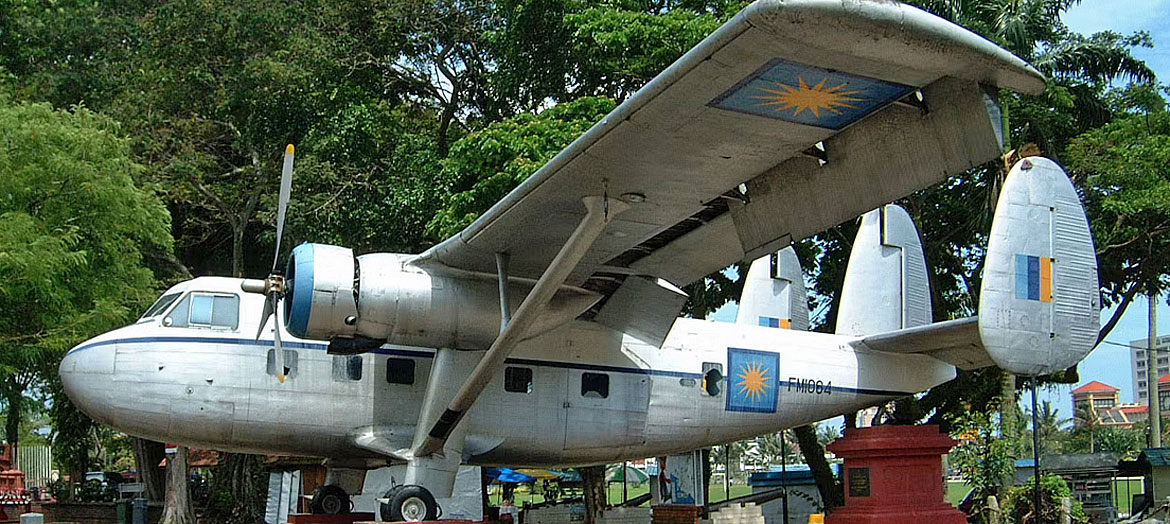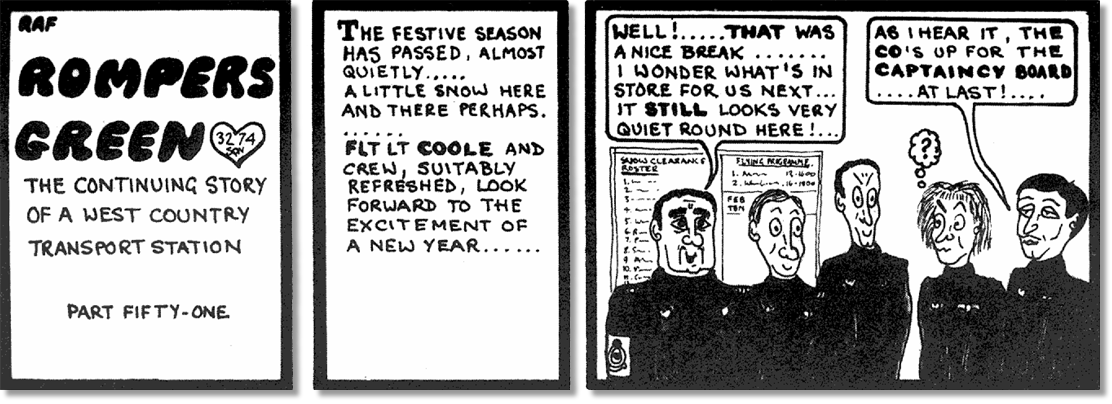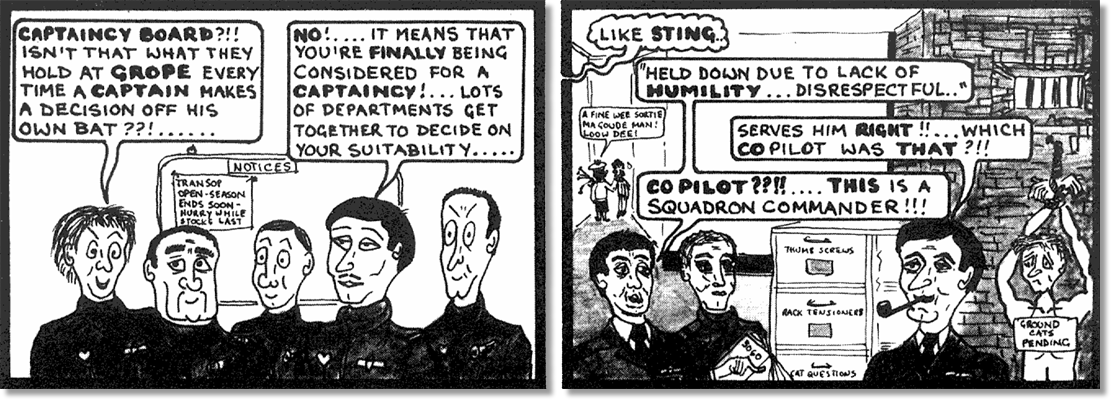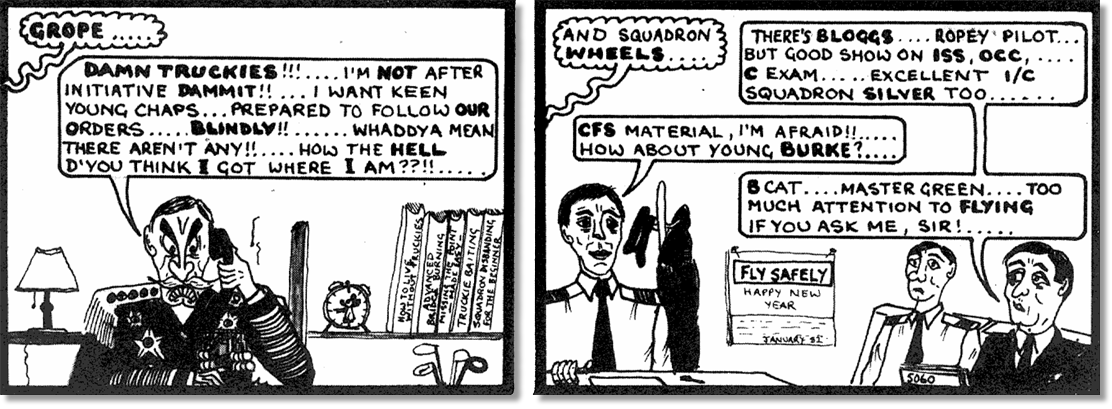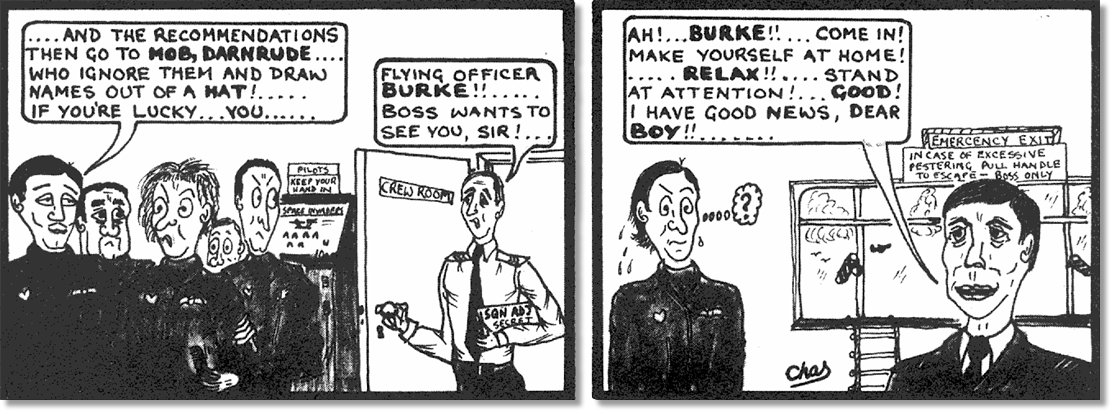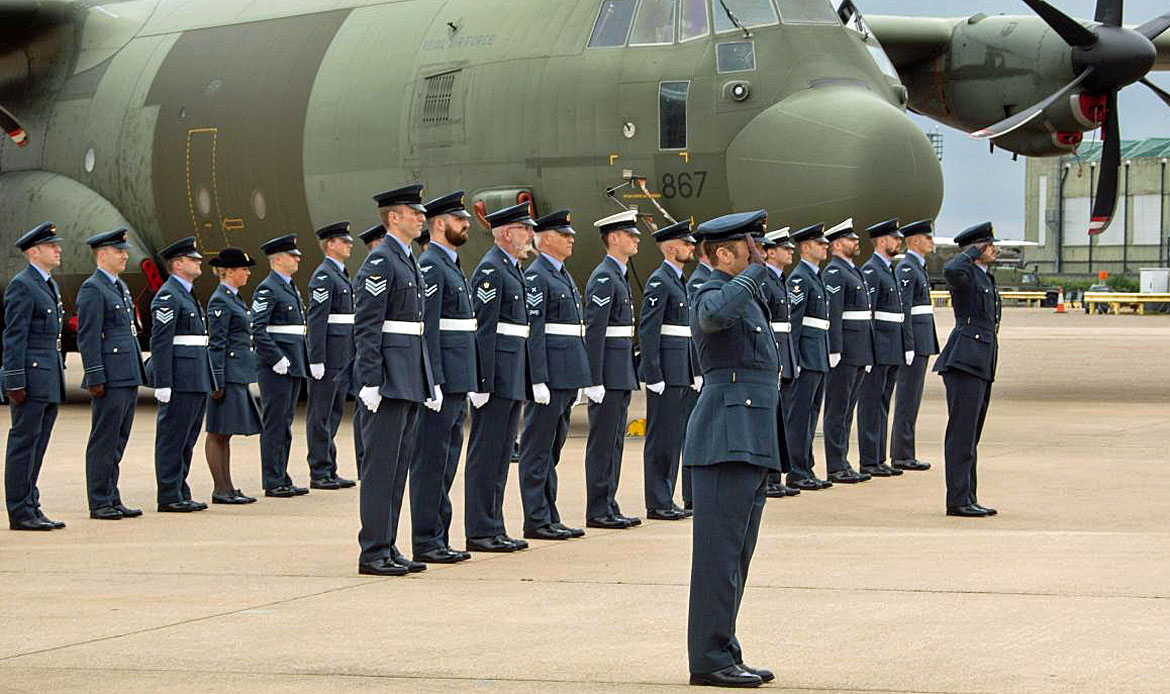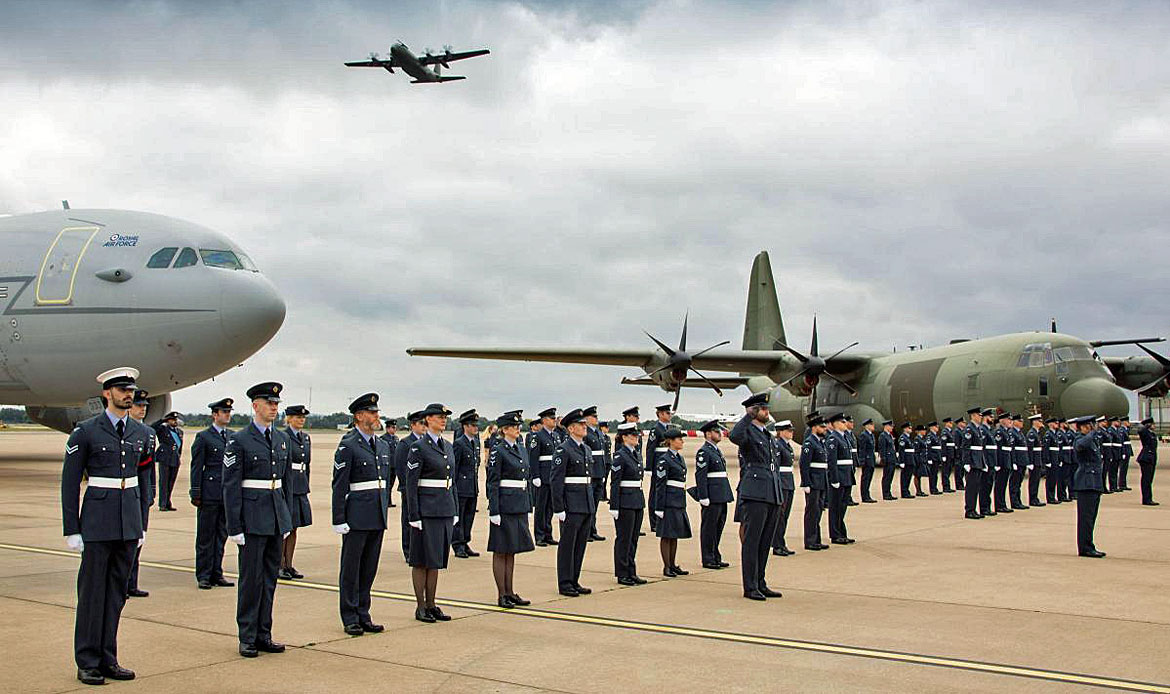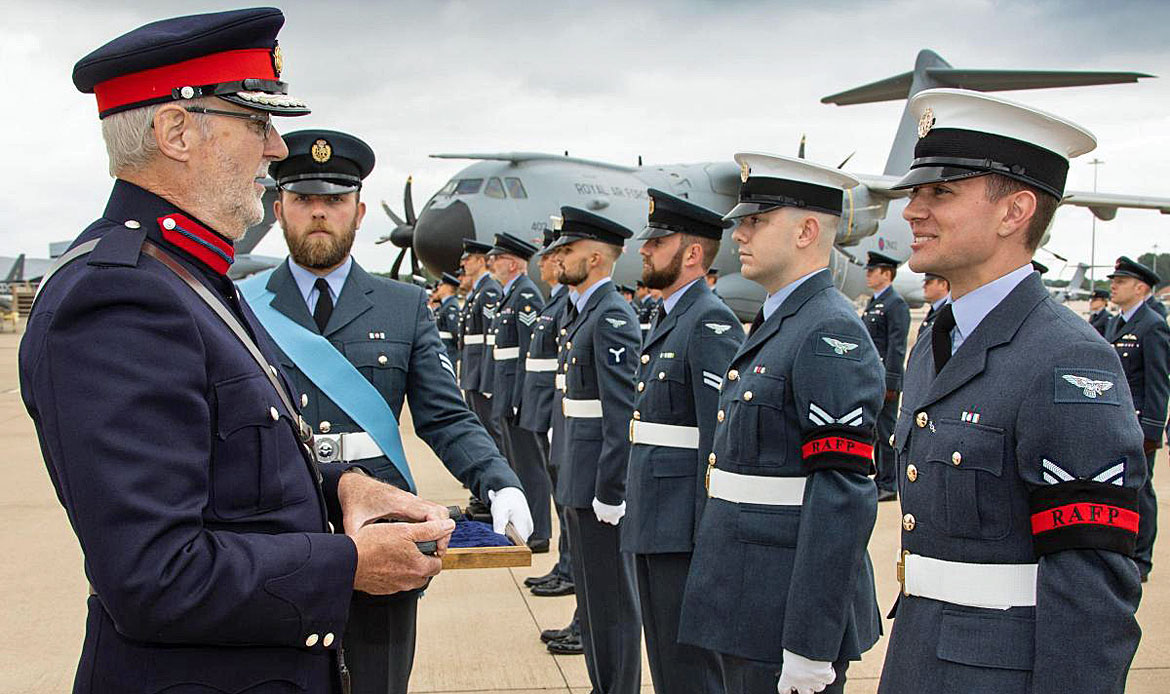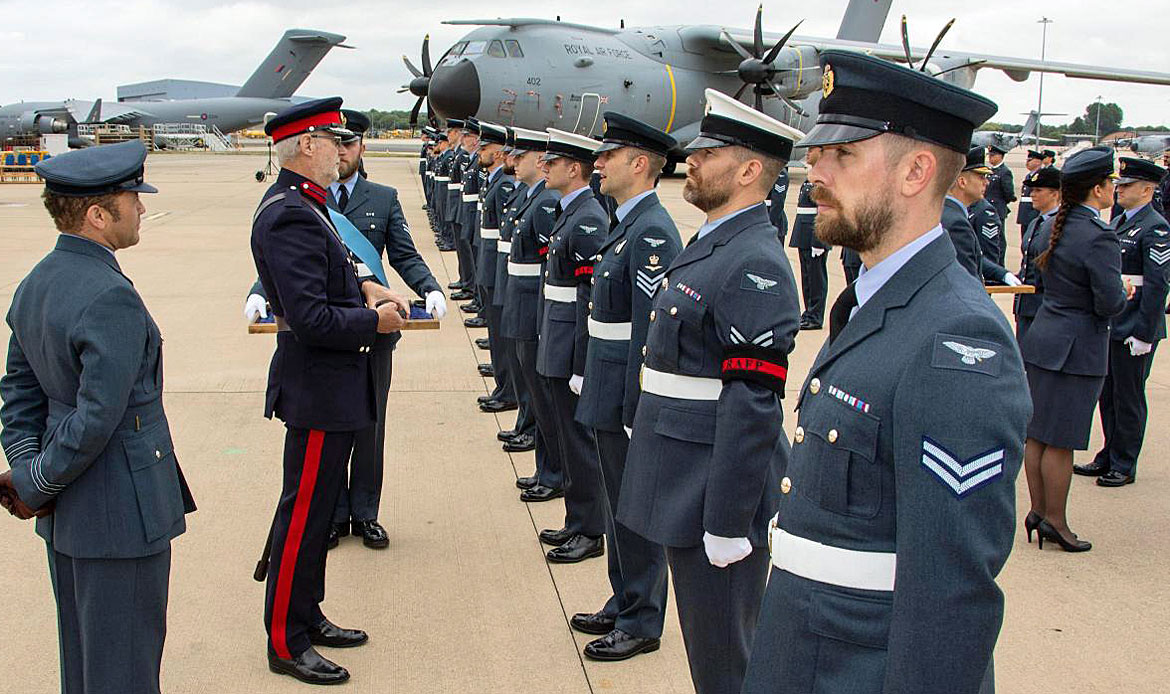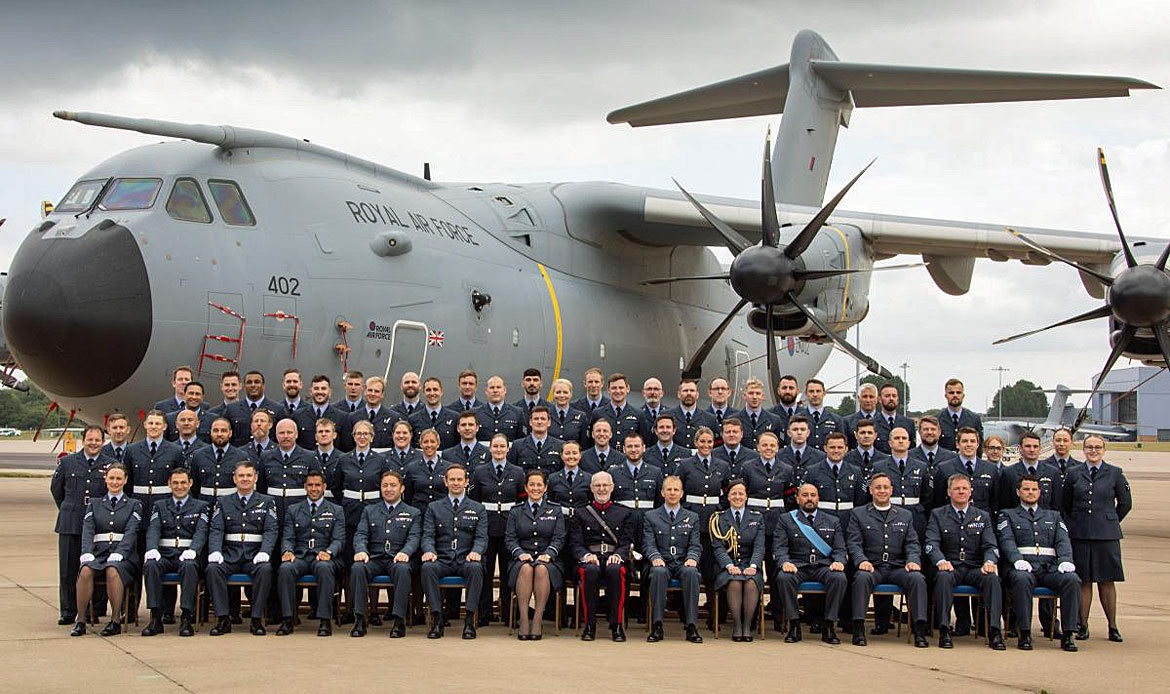


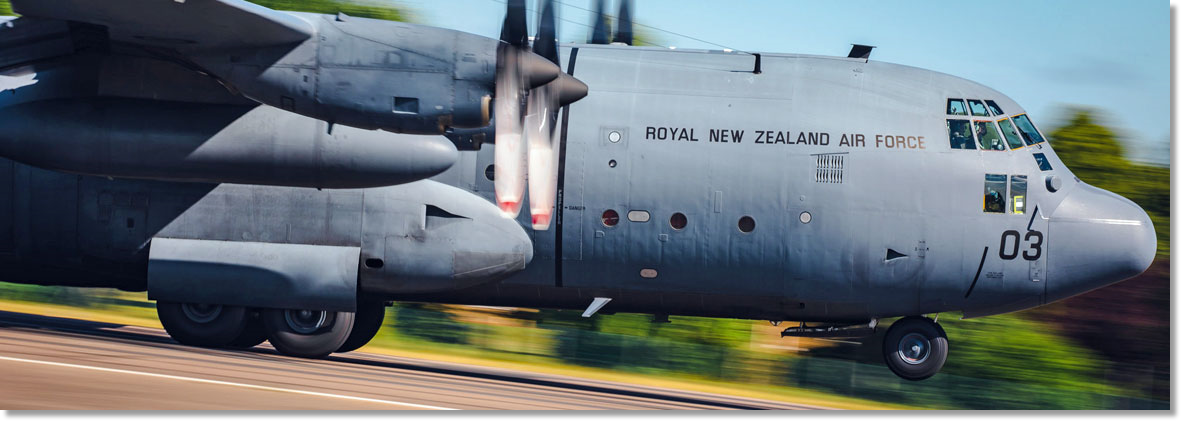
The aircraft and personnel were deployed in April for a period of up to 60 days to conduct missions in support of Ukraine’s self-defence. Over that time, crew on the Hercules carried out 62 flights transporting 256,000 kg of military aid and 92 passengers.
The Air detachment commander, Wing Commander Lisa D’Oliveira, said the mission had been a success. “We’re really proud to have been making a difference. We went to the UK at an important time and what we have been contributing has been hugely significant. We’re pleased to have played our part in working with the international community in supporting Ukraine’s self-defence,” she said.
The NZDF has deployed 86 personnel to the UK and Europe where they have been working with international partners in a range of roles including intelligence, logistics, liaison, artillery training, and air transportation. This includes personnel based in Germany, working with international partners to cohere and coordinate the movement of donated military aid. They have been working to ensure equipment donations are in accordance with Ukraine’s operational priorities, coordinating the logistics for donations and then matching transport to aid consignments. Crew on the Hercules were assigned consignments, transporting donated military equipment and stores, including medical stores, between staging points in Europe, from where the aid was taken into Ukraine.
The aircraft was based at RAF Brize Norton, United Kingdom. NZDF personnel have not been entering Ukraine.
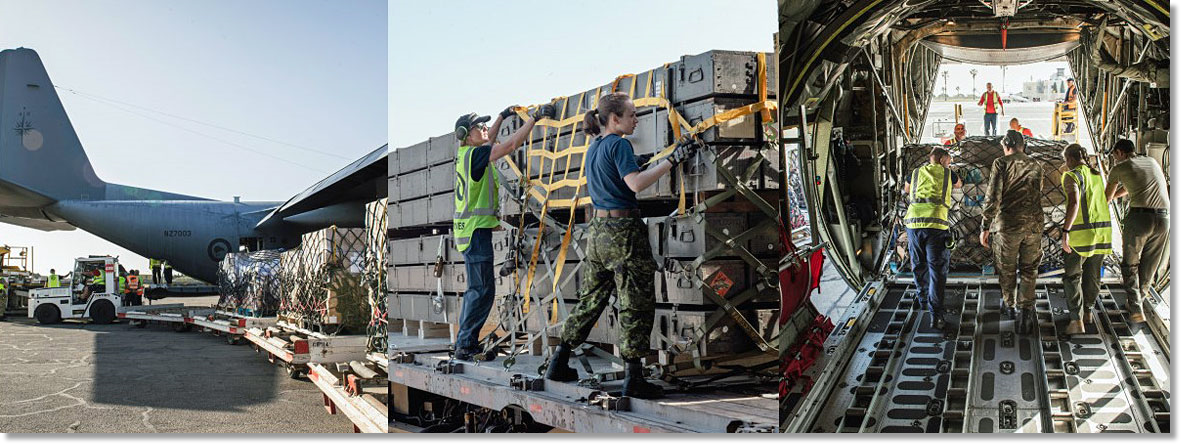

Subject: RE: UKMAMS OBA OBB #053122
Tony
With regards to Andy Gell's memories of Military Aircraft Commanders (MAC) on the fledgling TriStar fleet, you can tell Andy it was 1984.
I took over from Andy in July 1984 (HO/TO on the pan - he was last seen running towards the steps having taken too long!). The SAMO was Kit Ayers with DSAMO Rae McLeamon. They were replaced by Paul Grimson and Dave Sefton. When I got there, other DAMOs were Rich Gibson and Tim Housely. Rich went sick so Tim and I were on permanent days for a week then permanent nights until he returned. Rich was replaced by Vanessa Mitchell, Tim by Mark Stephenson and me by Maria Djumic. There was a Navy Lt Cdr Senior Naval Officer (SNO) who I recall drank neat gin.
Great times - no pre-tour leave, no mid-tour leave, LOA for the first month and then straight onto UKMAMS. I remember getting to Lyneham and Jim Stewart asking me where I would like to go for my first trip; as a result I ended up as Mr. America for the first year of my two and a half years on Delta Team!
An interesting after is that when I got there, desert boots were in short supply and I had privately bought ones which had a slightly different hue and annoyed Rae who was forever telling me to get them changed (and I refused to wear black shoes as it looked ridiculous with KD!). As a farewell gift to him, I saw him off at the foot of the steps and showed him my new service issue ones which he said was the perfect end to his tour. I got a tongue-in-cheek bollocking from Kit for giving into him but by then, my original boots were on their last legs!
Rich Gibson was known as Lord Lucan by his shift as he was very elusive and refused to do nights and got the trim clerk to bring him the trim in his basha. Paul Grimson found out about this and suffice to say his last few months saw him doing both days and nights (the latter Rich hated). Rich then went onto UKMAMS where apparently he managed to get a Fiat Spider back from the USA in bits and pieces. We then had a Taceval Part 1 called and he was the only Team Leader unavailable as he was working on a market stall somewhere. Suffice to say his time in the RAF was short but I heard some years later that he had joined the Royal Marines as a reservist.
Regards
Chris


Subject: Jubilee Celebrations
Hi Tony,
Watching the celebrations and the appearance of the Duke of Kent alongside Her Majesty, brought to mind a story that I would like to share with the group.
In April 1963, I was on duty at Air Movements Khormaksar when a call was received from HQMEC that they had a compassionate A case for the next flight to the UK. There was a flight due in from Hong Kong / Singapore / Gan back to Lyneham. We asked for the comp case to be sent to us immediately so we could emplane him. He duly arrived and we awaited the arrival of the inbound flight. On arrival, the flight was full, mainly with soldiers from the Royal Leicestershire Regiment who were stationed in Hong Kong but who had managed to obtain tickets to watch the FA Cup semi-final between Leicester City and Liverpool; they had wangled a group of indulgence seats.
Also on board, as an indulgence passenger, was none other than the Duke of Kent (then an Army Captain stationed in Hong Kong). He was flying home for the wedding of his sister Princess Alexandra to Angus Ogilvy.
Now comes the problem. HRH was the highest ranking serviceman on board and he was an indulgence passenger. Queen’s regulations stated that the highest rank should be offloaded first to accommodate priority passengers.
Our DAMO was having a fit of apoplexy as us humble airmen were insisting regulations be followed. A few very high level phone calls were made and we were asked to find a passenger who would voluntarily give his seat up for the Comp A. None of the Leicester boys were going to cooperate but finally we found an RAF Sergeant who was willing to give up his seat and await the next flight in a couple of days.
Best regards
Fred


Subject: Strange Loads
Hi Tony,
Another story of a strange load when we were pulling troops out of Singapore in 1971.
At times during the run-down, civilian aircraft would be chartered to supplement our own fleet. We often used CL-44's, a variant on the Britannia. On one occasion, the loadmaster of a CL-44 offered a payload of around 30,000 lbs. I asked him how he would like the aircraft trimmed. He answered, "Just shove it on and pull the net around it."
When I queried this, his response was. “We have to make a profit, not like you air force bods, we’ll sort it out in the air.”
Kind Regards
Terry
Tony G: I heard a rumour, towards the end of the Britannia's life, that she could never be put out of trim no matter how she was loaded. It may have been the same for the CL-44 Swingtail and CC-106 Yukon.
Terry J: Quite right Tony. You could trim it with the back belly. Brilliant for general freight.


The 12 service dogs and their RPNGC handlers travelled on a Royal Australian Air Force flight from Port Moresby to Mount Hagen in the Western Highlands Province as part of ADF support to the PNG Government. Inspector Jack Hori, officer in charge of the RPNGC Dog Unit, said the team would be on standby to support a range of tasks, including crowd control ahead of and during the election. “Our dogs are trained to a world-class standard and have been deployed on important operations in the past, including the Asia Pacific Economic Cooperation (APEC) meeting in 2018,” Inspector Hori said.
At the request of the PNG Government, the ADF is providing specialist planning and logistics support, including two C-27 Spartans and one C-130 Hercules transport aircraft that are ideally suited to the mountainous terrain and tropical runways located across PNG.
Sergeant Kenneth Szekely, an independent load inspector with RAAF 23 Squadron Air Movements, said the special payload of 12 canines had been well behaved. "We don’t carry service dogs often but we’ve carried them before during large operations,” he said. “The dogs are all well trained so getting them loaded and on board went very smoothly.”
The dogs were first brought to Papua New Guinea from Australia in 2017 ahead of the APEC Summit and were trained by the RPGNC dog unit with assistance from private training provider Dog Force Australia.
defence.gov.au

Subject: Souvenirs
Tony,

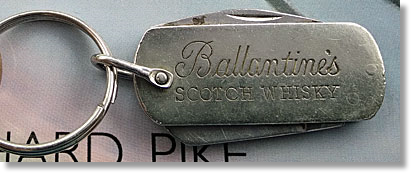
Regards
Steve

Subject: Souvenirs
Hi Tony,
My souvenir story relates to the team deployed to Port Stanley in 1982. On arrival on the first air land with the AT Det Cdr and Rex Hunt, we found wrecked Argentine aircraft all over the airfield. We quickly decided that we needed to get to work smartly if we wanted a decent souvenir from the various Pucara aircraft and the det Ground Eng and I dismantled the prop of the only aircraft that had any straight blades and stashed 2 of them away for our return to UK.
Imagine our frustration after our return in October to discover that Boscombe Down [The UK's psuedo "Area 51"] had tracked down the blades and wanted them to maintain the Pucara shipped back to UK for assessment. As far as I know we didn't even get a mangled one in exchange!
Cheers to all,
Andy Holliday
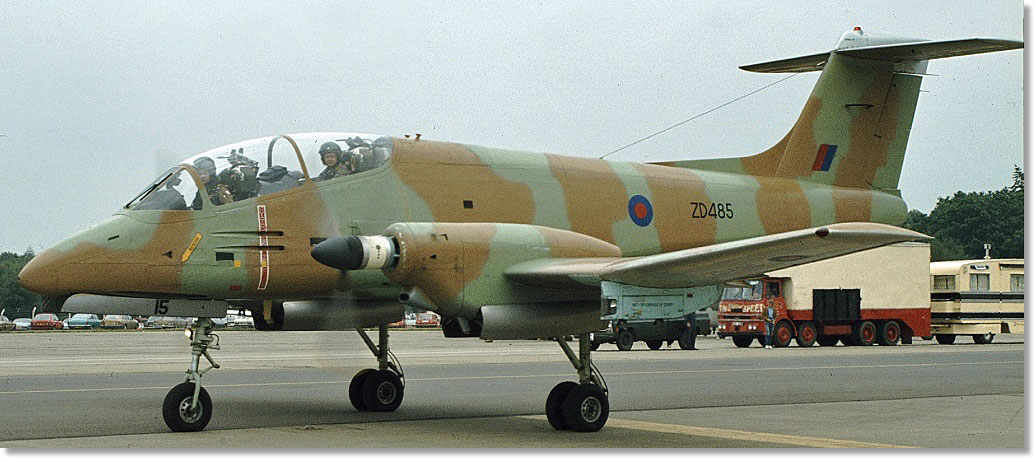

Tuesday 14th June marked the 40th anniversary of the Argentine surrender in 1982, following weeks of fighting.
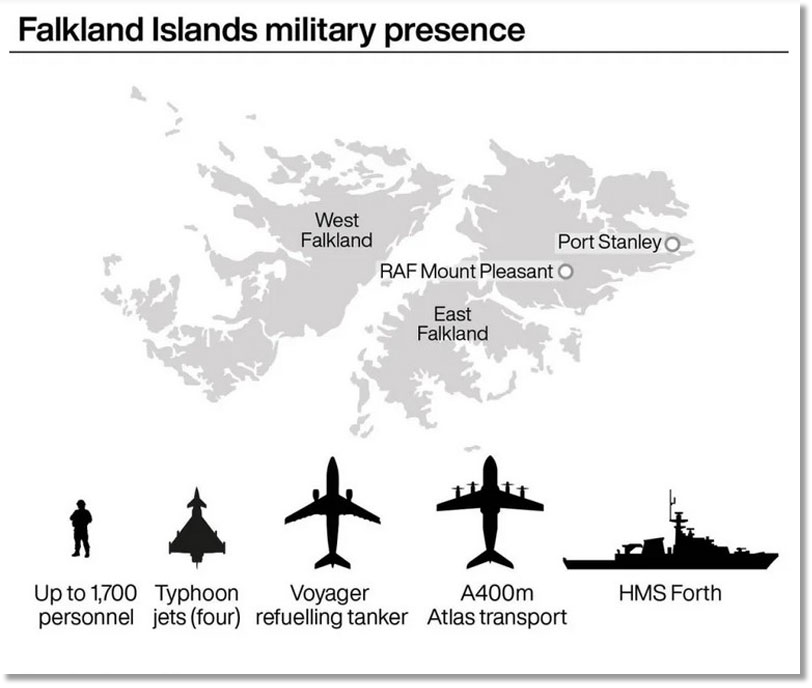
Royal Air Force - At the heart of the base is its airfield and two runways. Four Typhoon jets are based here, and they carry out “deterrence patrols” in an effort to ensure the security of the Falklands, the South Sandwich Islands and South Georgia, according to the Royal Air Force. A Voyager air-to-air refuelling tanker is also permanently based in the Falklands, supporting the Typhoon jets, as is an A400M Atlas transport aircraft. An early warning and airspace control network is maintained by the British military, designed to monitor the skies above the Falkland Islands.
Royal Navy - The Falkland Islands has a Royal Navy vessel permanently assigned to it, which is currently HMS Forth. One of the Royal Navy’s second batch of Offshore Patrol Vessels, she is armed with a 30mm cannon and tasked to patrol the South Atlantic.
British Army - The British Army also maintains a permanent presence, with hundreds of troops deployed at any one time to train on the Falklands. They have a working relationship with the Falkland Islands Defence Force, a small volunteer unit comprising residents and funded by the Falkland Islands Government.
In March 2022, Armed Forces minister James Heappey said in response to a parliamentary written question: “The Ministry of Defence undertakes regular assessments of possible threats to the Falkland Islands to ensure that an appropriate defensive capability is maintained. Our forces in the South Atlantic are at the appropriate level to ensure the defence of the Islands.”
Yahoo News


Subject: Souvenirs
Hi Tony,
Once again thank you for keeping us old ‘uns in touch.
On the subject of souvenirs, one particular dangerous purloined item springs to mind… In the crew room at Lyneham a ‘dummy’ bomb appeared and someone hung it with handcuffs from a heating pipe near the ceiling. It had been there for a number of years.
On one of our tasks our Hercules was directed back to Lyneham and one of the passengers, a Chief Tech Armorer, came into our crew room, spotted the dummy bomb and pointed out that although it was a dummy, it still had an explosive charge in it!
It was very quickly removed and carefully disposed of - could have caused serious injury if it had fallen from the ceiling. Don’t think any more ‘dummies’ appeared after that!
Regards
Liam


Subject: Souvenirs
Hi Tony,
Many thanks for this reminder of days gone by, and the little things we used to get up to! I remember a number of single blokes that carried the odd souvenir back in their bloodstreams, often waiting for the nurse the next day and a course of antibiotics; it was almost like a chapter from Leslie Thomas's "Virgin Soldiers" at times in 1950's Singapore. Oh, to be young and daft again, instead of just daft!
Talking of 1950's Singapore, I remember being intrigued by a rug in the MAMS crewroom at Lyneham when I first went "Mobile" in 1981. It was the "Have a Nice Day "Tuesday" rug that had pride of place just inside the crew room door. I wondered where it had come from for a few years, until a Global C130 task took me through Singapore in 1984 (Nobby Clarke's Swan Song), and we stayed in the Marco Polo Hotel.
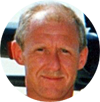
Lo and behold, in the lift was a "Have a Nice Day" rug... I thought, after a few pints, that I could add to the crew room trophies and maybe grab a Thursday or Friday, but while attempting to lift the rug an alarm sounded.
Quite clearly the hotel had lost far too many rugs before and had taken precautions. I had, however, satisfied a long curiosity. Sadly, having recently checked, the Marco Polo Hotel on Tanglin Road is now closed.
Although my days in those far flung places are now sadly gone, I have great memories of the evenings on Clarke Quay and cooking on the steamers. I think my last bill (in 2006) for an evening of eating and drinking was less than £10. I would have stayed overnight if I'd had the energy ;-)
Anyway... enough of my rambling. Great times and happy memories.
Cheers,
Mick
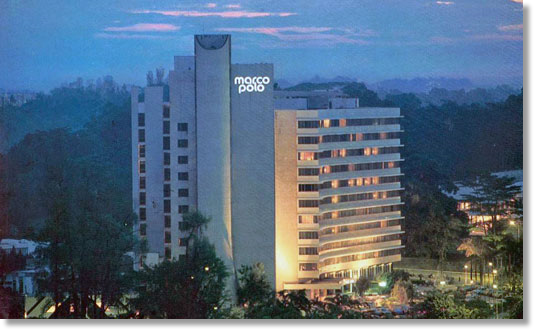

Subject: Reunion/Souvenirs!
Tony,
I attach a photo taken at the RAF Club, London, on 16 June 2022. A small reunion of UKMAMS guys who served in the mid-1970s at RAF Lyneham (we are all ageing souvenirs now!).

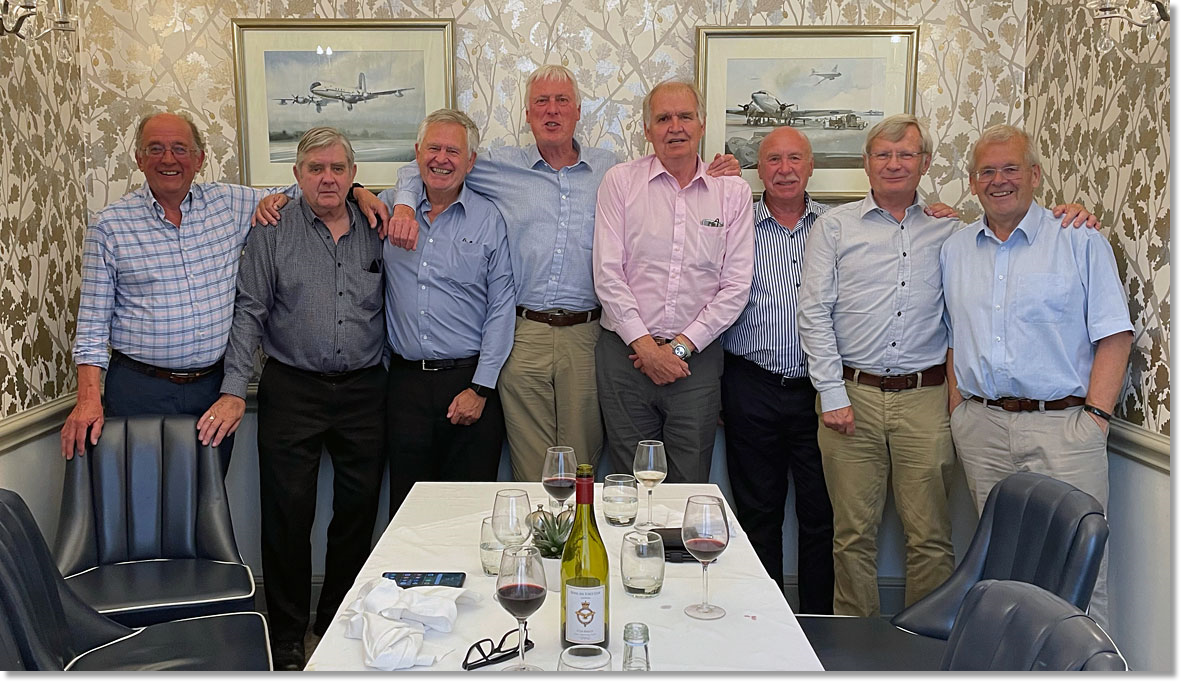
Take care,
Jerry

The armored vehicles were loaded onto a Ukrainian Antonov AN-124 aircraft and took off from Royal Australian Air Force Base Amberley last week, the Australian Department of Defence announced on Sunday.
Canberra has committed over 285 million Australian dollars ($198.6 million) in a military assistance package, which includes Bushmaster Protected Mobility Vehicles, M777 Howitzers, anti-armor weapons, ammunition, drones, and a range of personal equipment. The shipment is in response to a request by Ukraine’s minister of defense for more vehicles to assist in the country’s resistance to the continuing Russian invasion “and demonstrates Australia’s sustained commitment to the people of Ukraine,” according to Prime Minister Anthony Albanese. “Australia, like many nations, condemns the continuing unwarranted aggression of Russia against the people of Ukraine,” Albanese said. He went on to state how the nation has stood by Ukraine since the beginning of the conflict and expressed pride in being able to offer advanced military capabilities to the Eastern European country.
Deputy Prime Minister Richard Marles added that Australia would continue to search for ways to provide the most effective assistance while calling on Russia to abandon “its unprovoked, unjust, and illegal invasion of Ukraine.”
Australia’s M113AS4 Armored Personnel Carrier is designed to transport battlefield infantry soldiers and has a long tradition of service with the Australian Defence Force. The indigenously-developed AS4 troop transport is an updated version of the “highly effective” M113 series deployed with the Australian Army and other countries’ armed services since the 1960s.
“Along with the proven Bushmaster Protected Mobility Vehicles, the M113AS4s will provide valuable protected mobility for Ukraine forces, joining similar capabilities being gifted from across the globe,” the department stated.
defence.gov.au/thedefensepost.com
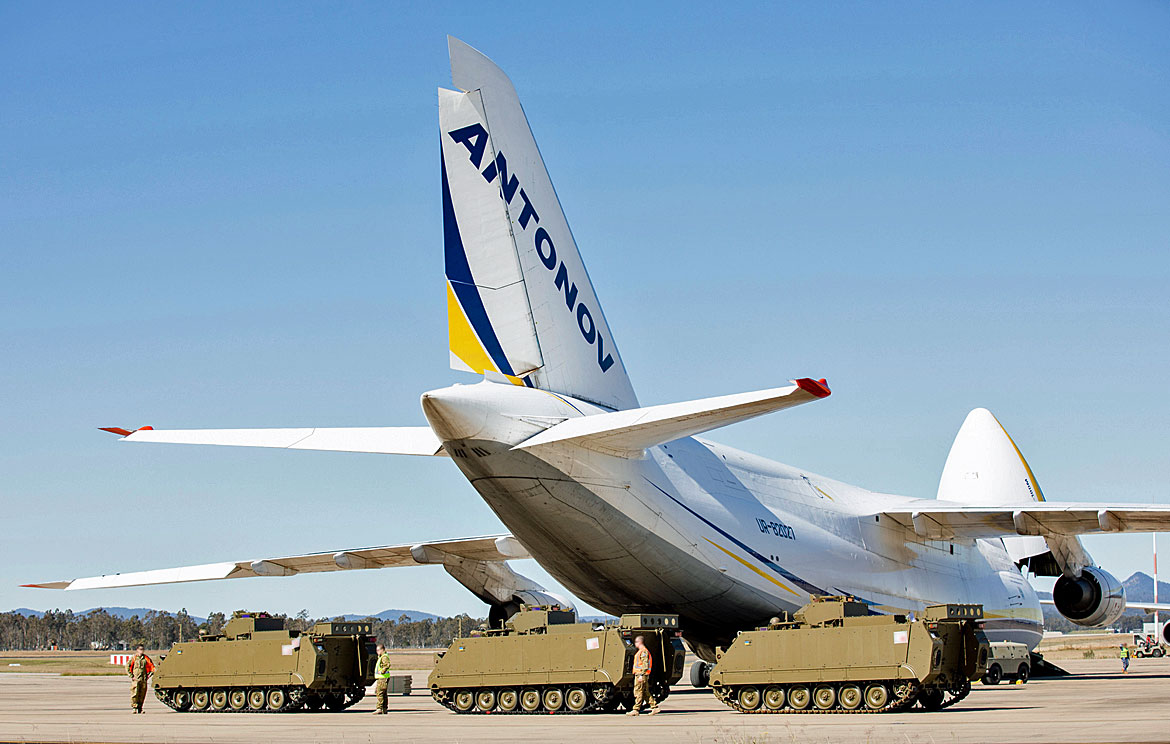

Subject: Souvenirs
Hi Tony,
Once, when taking part in a United Nations exercise in Norway, we arrived at Stavanger at 0300. Upon arriving at the transient barracks, there was no House Mouse to provide us with bedding so we had to "Hot Bed" it.
As it happened, we followed a Greek crew and I was fortunate enough to bring back a souvenir case of the crabs.
Keep smiling!
Tony


Subject: An item or two for Klepto Korner
Hi, Folks,
One night in Denmark... Tottering back to our sleeping shed from the drinking shed, Dinger Bell (of the Ian Marshall variety), and I were walking past a RDAF Squadron Headquarter’s building. There nestling quite comfortably on a plinth was a driving wheel of what we surmised, quite correctly as it transpired, a tank. You know, a big metal bangy-bangy type of thing. Quick discussion between us and we came to the conclusion that said creature would look nice outside our Squadron HQ.
To cut a short story long, such occurrence transpired. Shortly after, the excretia connected with the air conditioning system, all the way up to, and almost past MoD. How could people love such a lump of metal? Well, this particular lump of metal was, sure enough, a driving wheel of a tank. So? Well this particular tank was of a WW2 German variety and the first tank to be destroyed when Denmark was invaded! Said tank was destroyed by this particular RDAF Squadron, oops!
The wheel had to be returned, of course. We were away on another task when this happened, but I believe the young Officer (Ian…..?) who took it back was resplendent in No.1s., mit sword etc. If he is still around maybe he could fill in the ending.
One night in Norway… Same Dinger, standing on my shoulders to retrieve the skull and horns of a small deer type wotsit. However, I was standing in the middle of a holly bush with my head jammed against a wall. I felt a right p….! Quite a few in fact.
Cheers,
Syd


Subject: Souvenirs
Tony,
A subject most dear to my heart and which caused me more problems than you can shake a stick at during my tenure as OC UKMAMS from 1971 to 74. I remember some of the thieving you mentioned but not all.
There was one episode which caused me the most aggravation during my tenure of office and was probably the reason why I was never promoted in my last fourteen years of service! It concerned the theft, by an unmentioned team, of the cogged wheel taken from the last German tank in Denmark to fire a round in anger before the surrender in 1945.
It had been mounted outside the Ministry of Defence in Copenhagen since that time and was a revered token in Danish military eyes. I had plenty of previous experience of the proverbial hitting the fan, but this episode left those as fairy tales.
Once it was discovered who the perpetrators were, all hell let loose which ended me being interviewed by my station commander and having to write a formal apology to the Danish Military Attaché in London together with the return of the said wheel to Copenhagen.
Following that episode I dreaded attending future Friday evening happy hours in the crew room for fear of finding another trophy of equal magnitude. I could go on but I am sure others will come up with other episodes I have long forgotten.
Regards,
Bryan
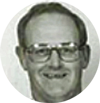

From 1 July 2022
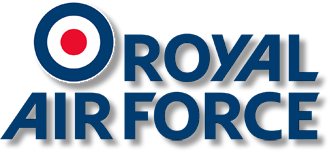
- Aircraftman (AC) will be replaced with Air Recruit (AR)
- Leading Aircraftman (LAC) will be replaced with Air Specialist (Class 2) (AS2)
- Senior Aircraftman (SAC) will be replaced with Air Specialist (Class 1) (AS1)
- Senior Aircraftman Technician (SAC(T)) will be replaced with Air Specialist (Class 1) Technician (AS1(T))

Subject: Souvenirs
Hi Tony,
1980s. One Sunday, on the way back from Akrotiri in a empty Herc, we stopped at Gibraltar. Since everything was generally closed we popped into VASF for a quick coffee. I espied an Officer's SD hat and I thought, "We'll have that for the crewroom". Said souvenir aquired and off to UK.
I extracted the hat next day in the crewroom to show my fellow Movers how clever I was, and to my horror it had lots of scrambled egg on it!
Within 30 minutes I was "invited" to OC UKMAMS office and had a very enlightening one-way conversation with the Boss on lots of reasons not to "souvenir" the Gibralter Station Commander's hat. The hat was nicely boxed up and sent back to Gib with a letter of apology on the 1st available aircraft. Thank heavens the boss had a sense of humour!
Wildenrath early 1980s. While I was SNCO i/c Off-Base Tasking, there was a trend for teams to return from tasks with brass plaques/signs that they had unscrewed from various establishments all over Europe (for safe-keeping). One young officer returned after a task with a considerable amount of signs, so I told him that INTERBOLS wanted to speak to the team leader about a quantity of signs that had gone missing in that area.
Now this poor young officer had several bad days worrying about this upcoming career-changing interview with INTERBOLS. We eventually took pity on him and told him it stood for the International Bureau of Lost Signs. It took him a while to forgive us (you know who you are sir!).
There may be many more!
Regards
Derek B
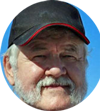

Subject: Souvenirs
Hi Tony,
I'll lay claim to the Rubber Plant and it was 'lifted' by Echo Team from the Gander Hotel in 1972. It then remained in the entrance to the HQ at Abingdon. When we moved to Lyneham in 1974 it came with us and remained in the entrance to MAMS HQ for many years. Sadly as the years progressed and because of it's location it became the receptacle for many a used cigarette (Dog End) and I suspect nearly died of nicotine poisoning. I am convinced it was Jackie Brice, the Sqn Typist who nursed it back to health and it recovered.
When I was the TSO I recall watching an episode of 'Antiques Roadshow' and a similar sawfish rostrum was assessed. The specialist stated that the going rate for these items was £500. The following Monday I went into the crewroom to look at ours, only to discover someone had 'nicked' it! (As of 2022, the selling price for a sawfish rostrum is anywhere between £1,220 and £5,550)
However, I digress. In our 20-man room we discovered in one of the lockers a 'Battle flag'. This was a Union Jack, some 40ft x 30ft in dimensions. It would have looked great on the hangar wall back at Lyneham or on the ceiling of a suitable room. Sadly, we did not relocate it.
Ian
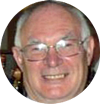

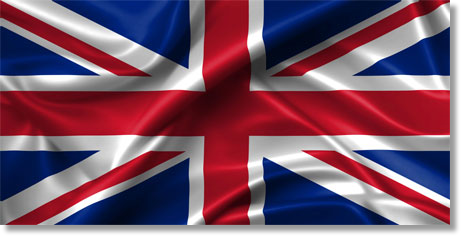
Flying the Union Flag upside down - It is often said that when the union flag is flown upside down, it is a form of distress signal – a coded signal and should only be used as such. In the UK, flying the flag upside down can be considered an insult, even if it was an honest mistake. When shown two images of the Union Flag – one being flown the upside down, and one the correct way – only 45% of people who were asked could identify which was being flown incorrectly.
When was the Union Flag first created? The first use of the Union Flag was in 1606 and only combined the flags of England and Scotland. The present Union Flag dates from 1801 when St Patrick's Cross was added following the union of Great Britain and Ireland.
Why is Wales not featured on the Union Flag? Wales is already represented by the Cross of St George. When the Union Flag was created, Wales had already been invaded and was part of the former Kingdom of England.
What is the difference between the Union Jack and Union Flag? Some people believe it can only be called the Union Jack when it's sailed at sea, and when on land, it should be called the Union Flag. Others argue that it should only be called the Union Jack when it is flown on a ship or vessel at sea, because a "jack" is a small flag that is hung over a mast on a boat.
Why is it called the Union Jack? So, the name is thought to be derived from the naval term 'jackstaff' – the small vertical spar (pole) on the bow of a ship, where the Union Jack is flown.
Is It called the Union Jack or Union Flag? A publication called Flying Flags, produced by Parliament's Flags & Heraldry Committee, confirms that both names can be used no matter where it is flown.
When can you fly the Union Flag? Flags should be flown every day of the year, from sunrise to sunset. If a flag is to be flown at night, it should be illuminated.
Can you fly the Union Flag in your garden? You do not need to seek permission to fly the Union Flag. Anyone can fly the flag and it is actively encouraged. However, you may need to seek permission from your local council authority if you intend to plonk a huge flagpole in your front garden. Due to high winds, flags may become torn or ripped. They should be replaced when this happens, as flying a soiled or damaged flag can be considered disrespectful.
Laying the Union Flag on a coffin - The Union Flag is a form of respect – especially for those who have given their lives for their country. If you intend to lay the Union Flag upon a coffin, it should be placed so that the top left corner of the flag is over the deceased's left shoulder.
When should the Union Flag be flown at half-mast? It should be flown at half-mast from the announcement of the death of the sovereign, up until the state funeral. The correct way to raise a flag to half-mast is to fully raise the flag to the top of the pole, hold there for a second, then lower the flag down to two-thirds of the way up the pole.
Remembrance and the Union Flag - Flags will usually be flown at half-mast during all Royal and national days of mourning, although Union Flags should fly at full-mast on Remembrance Sunday.

Subject: Souvenirs
Greetings all,
From April to July 1970, a task I was involved in was Exercise Bersatu Padu, which took place in the Malaysian jungle. UKMAMS were located at a small makeshift airstrip known as Penerak. Following is an excerpt from the book "UKMAMS, Moving in Mysterious Ways" by Jerry Porter:
The cavity in the road represented a real hazard to the local traffic, and, to help reduce the chance of an accident, the hole was filled with a conveniently large branch taken from a nearby tree. Locals going to work the next day were flung into a superstitious panic to witness the miraculous transformation of the milestone into a tree, and for weeks no one dared venture out after dark.
This incident not only set Malayan education back fifty years and spawned a return to the practice and belief of voodoo, but also served indirectly to place black cockerels and white hens on the endangered species list.
In a strange twist of fate a milestone bearing foreign inscriptions appeared outside the UKMAMS crew room at RAF Abingdon and now sits outside UKMAMS Headquarters at RAF Lyneham - a finger of stone pointing accusingly at UKMAMS - the Malayan Gods are not to be denied.
As a footnote - the two main reprobates in the aforementioned transgression (sadly, no longer with us) were lead Don Wickham and second-in-command Dave Barton, both of Foxtrot team.
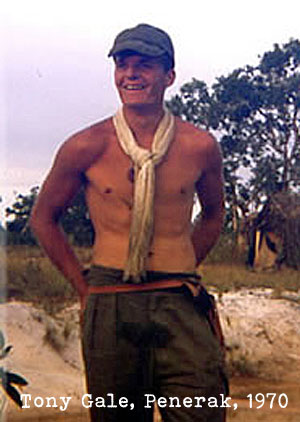


Subject: Our Old Crew Room Souvenirs
Hello Tony,
What an interesting subject. I well remember how the walls were covered with "collectables" in the crew room at Abingdon.
At the annual squadron inspection, the AOC asked what the large object on the wall was (a coco del mer shell double nut). Sqn Ldr Bill Jacobs, our esteemed leader, without batting an eyelid said, "Elephant's bollocks, sir". We all fell about laughing at that one, including the AOC!
The walls were festooned with plaques, foreign car number plates, probably misappropriated by the late great Sgt Bob Turner, he always carried a screwdriver wherever he went. When we were in Canada (Oromocto, New Brunswick), Bob decided to collect the flag off the top of one of the main shopping stores. Having succeeded in making it onto the flat roof, he found the rope and pulleys of the flag pole frozen solid (it was early spring) and had to sadly give up - I believe it was his only failure.
I missed the strange loads edition, so here's my contribution. I recall we were recovering a company of soldiers back to the UK from Belize via Gander. Included in their baggage were 80 live parrots. These birds had to be cleared health-wise so the medical officer issued certificates stating they were all fit to fly! Back at Lyneham our MAMS team slid off very quickly and never did find out if the parrots made it through HMC.
Your old mate,
Taff Price
Foxtrot Team 1966/70
(82 years old now and wondering how I've lasted so long.)
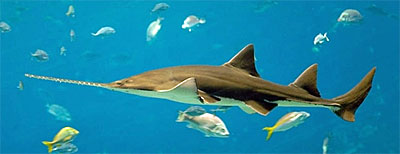


Design and history - The Scottish Aviation Twin Pioneer was designed as a variant of the Scottish Aviation Pioneer, albeit with an additional engine. The prototype of the Twin Pioneer first flew at Prestwick Airport in Glasgow, Scotland in June 1955, and demonstrated the aircraft indeed only required a very short runway.
After this trial flight, it was displayed at the 1955 Society of British Aircraft Constructors Show at Farnborough, a precursor to the current Farnborough International Airshow. Unfortunately, the plane incurred two fatal accidents due to failure of the wing panels. Although a redesign served to avoid this problem in the future, these accidents had a negative impact on sales.
Operators - The aircraft was operated by both civilian and military operators from around the world. Civil Operators included airlines from many former British colonies, such as Eastern Provincial Airways from Canada and Nigeria Airways. However, no airlines from the United States operated the type, possibly due to the influence Boeing had over those airlines.
The British Royal Air Force was the largest military operator of the Twin Pioneer, as the No. 21, 78, 152, 209, 225 and 230 Squadrons all employed the type. The aircraft were also based around the British Empire, including at RAF Eastleigh in Kenya, RAF Khormaksar in Yemen, RAF Muharraq in Bahrain and RAF Odiham in Hampshire, England.
Variants - The Twin Pioneer had three different series in addition to its prototype aircraft. Series 1 and 3 had an additional military variant manufactured for the Royal Air Force. The Twin Pioneer Series 1 had 420 kW Alvis Leonides 514 radial engines, and a total of 55 civil and military aircraft were built. Series 2 utilized the 450 kW Pratt & Whitney R-1340 radial engines and was exclusively for civilian use, with a mere 6 being built. Series 3 came with the 480 kW Alvis Leonides 531 radial engines and 25 of both the non-military and military types were built.
Legacy - The Twin Pioneer was not a very popular aircraft, with only 87 of the type being built over the production run of 20 years. However, despite the low popularity, the Twin Pioneer is still displayed at various museums around the world. For example, in the UK, the Twin Pioneer can be found at the Royal Air Force Museum Cosford in Shropshire, as well as at the National Museum of Flight in Scotland; in Malaysia, Twin Pioneers are displayed at the Royal Malaysian Air Force Museum and the Melaka Transport Museum.
simpleflying.com
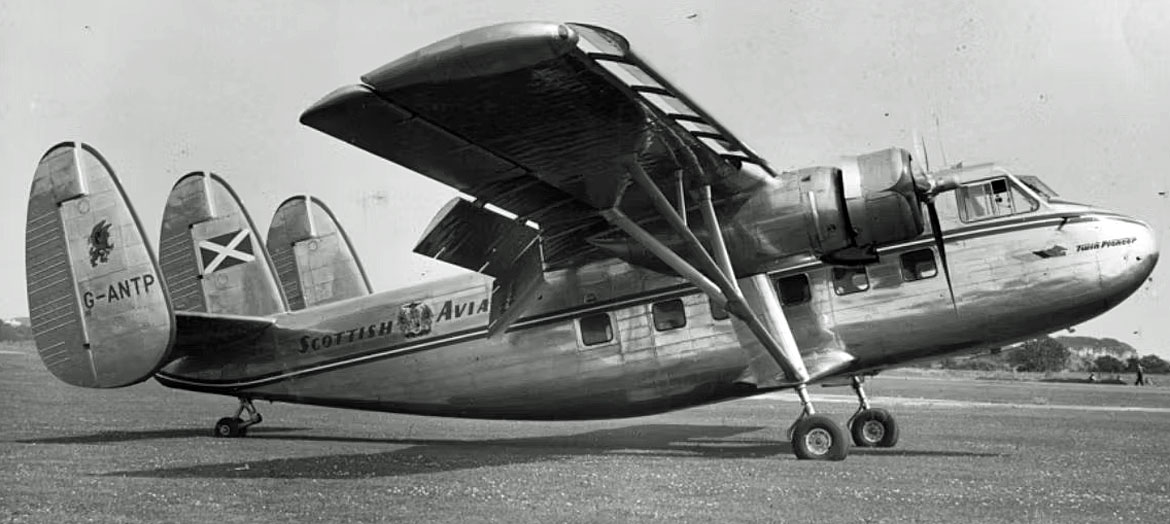

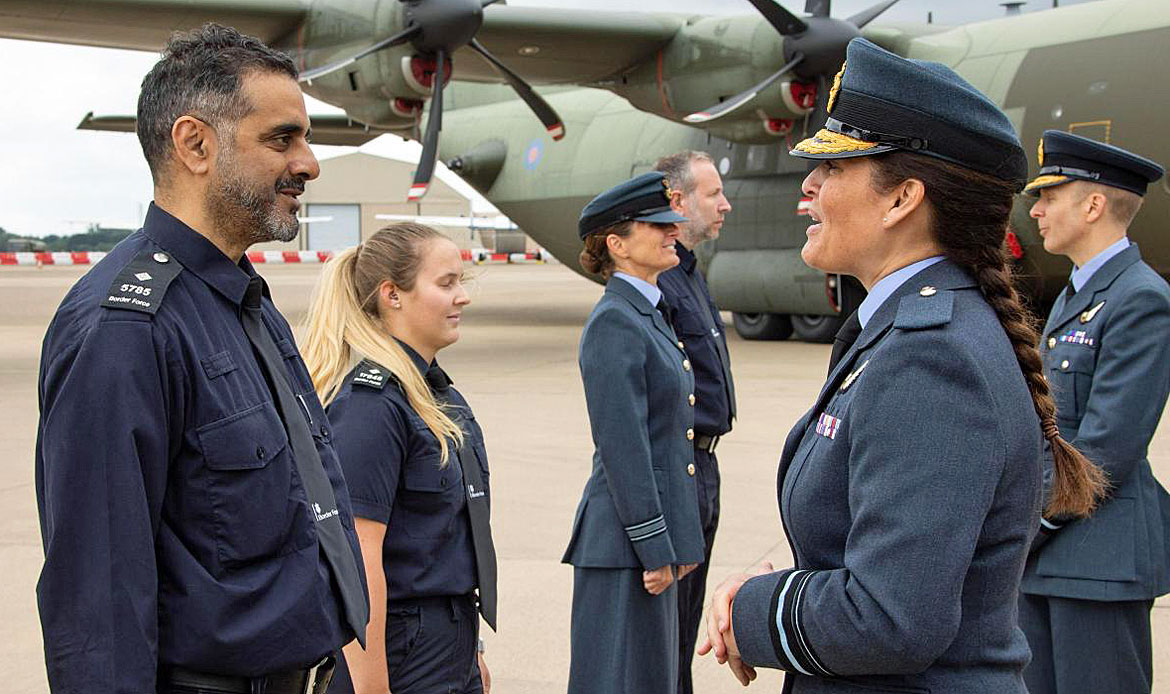
Operation Pitting was the largest humanitarian aid operation in over 70 years, which saw more than 15,000 Afghans and British nationals evacuated from Kabul Airport in just over two weeks as the Taliban seized control of the country. RAF personnel and aircraft played a pivotal role, working around the clock. The RAF flew 260,000 miles, making some 330 flights, and at one point airlifting 1,000 people a day to safety in the UK, where they were welcomed at RAF Brize Norton. The RAF also completed a record-breaking flight, with 439 passengers on board a C17 Globemaster.
Vice Lord-Lieutenant for Oxfordshire, Brian Buchan said: “I feel incredibly honoured to be presenting these medals today. I recall watching the events unfolding from afar and have great admiration for the personnel from all three Services who deployed on this extremely challenging operation. The work of the RAF to evacuate so many desperate people in such a short time I find inspirational and I am certain everyone involved in Operation Pitting feels the utmost pride in what they achieved."
As well as pilots and aircrew, the RAF deployed personnel from the Air Mobility Wing, responsible for returning equipment and loading all the passengers, protection personnel from the RAF Police and aviation security specialists from the RAF Regiment, to process evacuees and provide security for the aircraft. Tactical Medical Wing, also based at RAF Brize Norton, deployed to provide specialist medical support to those evacuating.
Air Officer Commanding Number 2 Group, Air Vice-Marshal Suraya Marshall CBE MA LLB RAF said: "It is a great privilege to be here today to formally recognise the efforts of our personnel during Operation Pitting and I am enormously proud to be awarding these medals. It was an extraordinary effort in extremely difficult circumstances which demonstrated the best of the RAF. We evacuated 15,000 people in the largest humanitarian aid operation in the last 70 years and everyone should be immensely proud of what was achieved."
Officer Commanding LXX Squadron, Wing Commander Calvin Bailey, receiving his medal said: “I am very proud and it's a fitting day that recognises the service and sacrifice from not only the people that served but the sacrifices that their families make as their support allow us to do our job.”
Although Operation Pitting has ended, the Ministry of Defence continues to support the relocation of vulnerable Afghans. The RAF has been flying eligible people from neighbouring countries to enable their resettlement.
Oxfordmail.co.uk
Everyone else did the journey by sea on either the SS Uganda or the MV Keren. The former was Army administered and the latter RAF. The journey took 10 days each way.
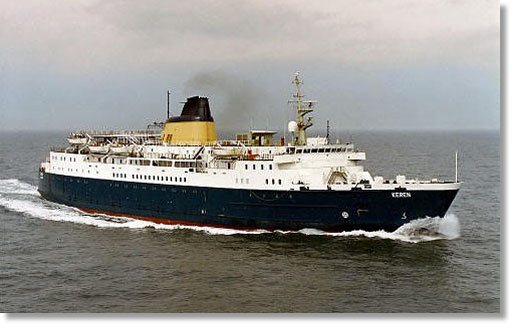
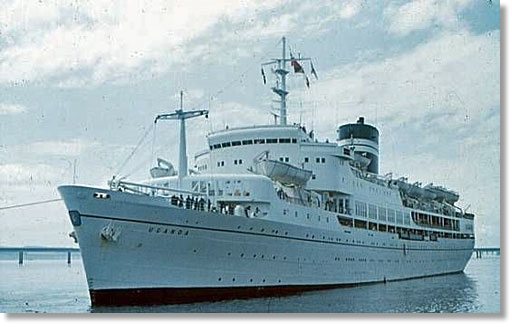
Not long after they were sold, BA asked if they could buy them back as they had just been given a South American route which was ideal for the -500, but too late!
In typical MoD RAF fashion, the aircraft had been bought, no thought though, had been given as to how to handle them on the ground. Even the present Spurling Aircraft Passenger Steps would not reach the main deck, the current RAF aircraft loaders were unsuitable too! The aircraft had been bought, but as yet we had nobody who could operate or fly them. The solution was to utilise a cadre of British Airways aircrew and cabin staff. The flight deck crew consisted of two pilots and an engineer; the cabin had six stewards, one for each door for emergencies. The only other dictate was that they were all male!
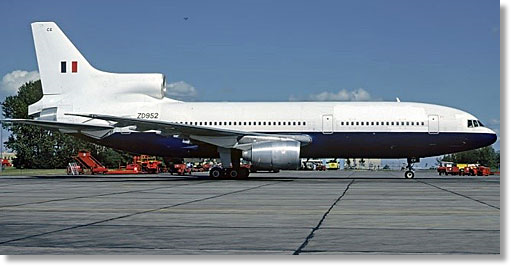
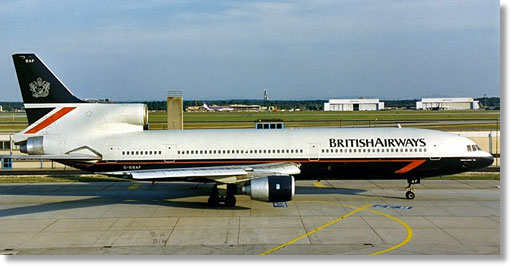
Slowly but surely we also had to learn the art of using lower hold ULD (Unit Load Devices) containers and pallets for baggage and freight, a totally new concept to the RAF. We had purchased four basic sets of small containers which have the IATA ULD Code AVE and AVM. I immediately helped myself remember the difference as (E) for easy (metal sides), and (M) for manual (canvas sides).
I mentioned the lack of ACHE (Air Cargo Handling Equipment) initially and so we started operating the aircraft using AVM containers and passing baggage through the open canvas sides to fill them!
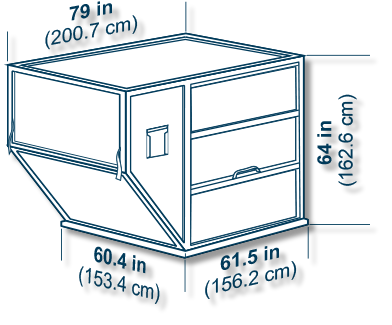
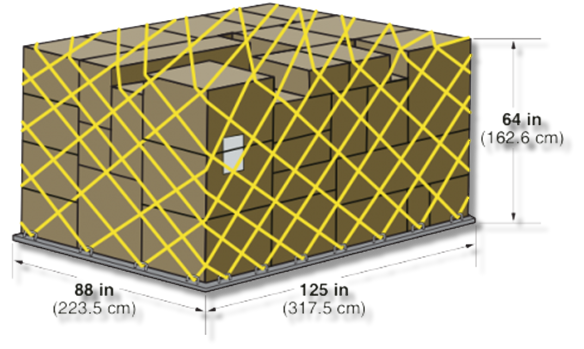
Between Nov 1982 and Nov 1985, I was the Senior Instructor on the RAF Movements School (RAFMS) at RAF Brize Norton. With no say in the matter I was selected to attend a Dispatcher Instructors Course at the British Airways Training Centre, Cranebank.
The course lasts for four and a half days but I was also tasked to attend an organised training session on ramps and inplane systems ran by Ramp Services at Heathrow.
With some trepidation and excitement I arrived at RAF West Drayton on the Sunday night. I would be accommodated here for the week and drive to Cranebank daily. My BA Instructor was a chap called Dominic Howe who was very knowledgeable and put me at ease. In between courses, Dominic’s remit was to travel around the world re-qualifying BA Dispatchers or giving further training.
As the week progressed I was introduced to IATA Loadsheets and ODMs (Operating Data Manuals). A very steep learning curve but I totally enjoyed it.
Although I primarily concentrated on the Tristar and Boeing 747 I learnt that the same documentation covers most commercial aircraft, including the Concorde. Another aspect I had to get used to was that I was now using metric weights for the first time. All RAF aircraft, VC10, C130 & Andover still operated in Imperial weights and measurements.
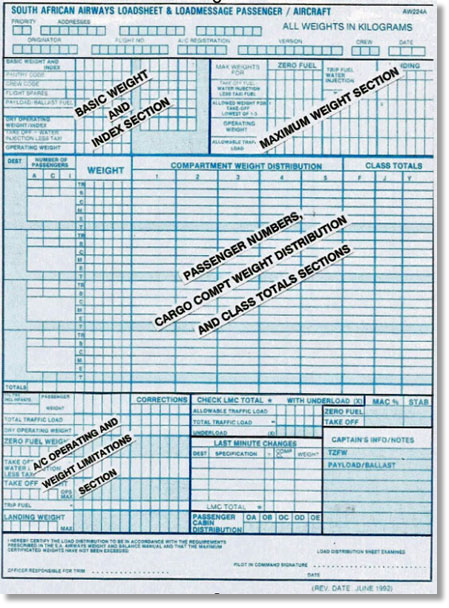
Inside the hold in the doorway areas there is an array of PDUs (Power Drive Units-Motorised Roller) and locks of several kinds, all controlled from a hand held control full of switches, buttons and lights, known as a pendant. Once I had digested all this information and proved to Les my ability we then relocated to a Boeing 747. There the whole thing began again.
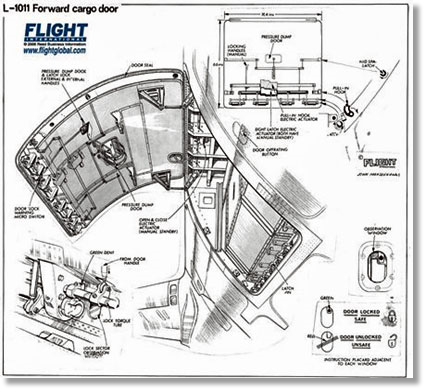
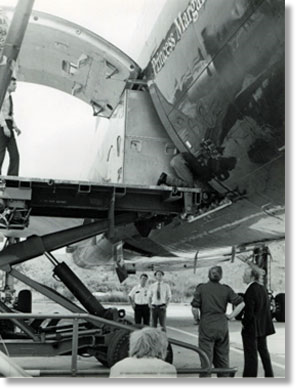
Working with BA I discovered that they had their own equivalent known as SWORD. This stood for Systems Worldwide Operational Route Data. As like the Jet plan system, the aircrew could overrule the plan and take more fuel. With BA though, if the aircraft landed with 2,000kgs more fuel than the SWORD plan the Captain was accountable. Unlike the RAF, “Payload is Profit!” Incidentally I was also told that amongst the Dispatchers SWORD stood for Sophisticated Way Of Running Dry!
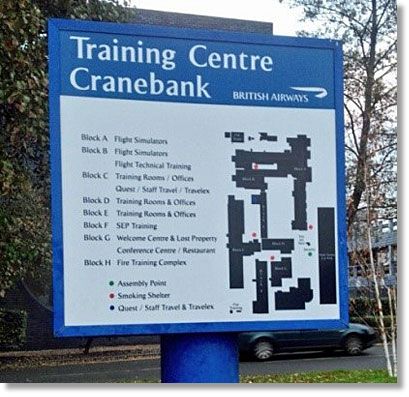
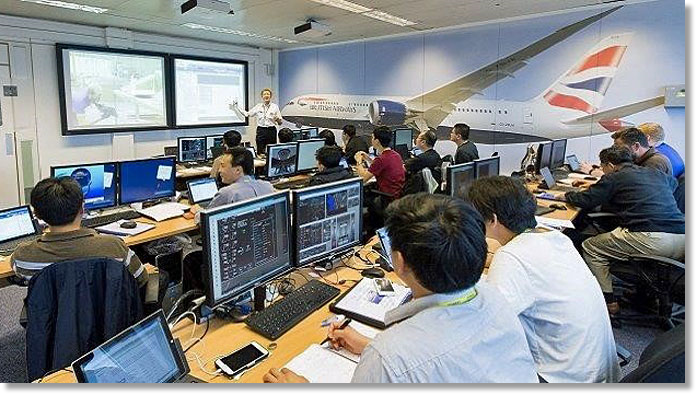
A couple of weeks after my own course saw me back at RAF West Drayton on the Sunday night meeting my fellow friends and work colleagues; some had travelled from Germany and Cyprus. As we all met up in the bar conversation ran to what the course was going to consist of. Of course black service humour kicked in including a comment that the instructor was probably gay! I never let on what my position would be or anything else about the course. Monday saw us all “bussed” across to the Training Centre at Cranebank. Once directed to our classroom, several of my fellow students gathered in the corridor with their coffees and carried on the chat. Eventually Dominic appeared, bade good morning, and everyone filed into the classroom and took a seat. I walked in last and went straight behind the lectern. The picture on all their faces was a treat!
So began the week and I took most of the lead, Dominic helping individuals with advice if they got stuck. As happened to myself, the course ended with an exam. Once again after that we continued on to Ramp services at LHR where once again I did the instructing under the watchful eye of Les. I must also add that the students did well as some had hangovers as most of us had gone across to RAF Northolt the night before to participate in the Air Movement squadron’s games night. Before we left Cranebank there was of course a critique and discussion on how the BA charter would work. BA were also initially going to provide the RAF with aircraft steps and ground loading equipment until we procured our own. My reward was that I was given a British Airways Despatcher Instructor Ticket, along with a job offer! I was having such a good time in the RAF though I turned it down. The other problem being the licence only lasts three years and you have to re-qualify.
Back at Brize Norton I then had the task of re-writing the BA training into RAF “yukspeak”. This meant “tweaking” the documentation too to reflect the new RAF ownership. In time I would also be running dispatcher courses at the Movements School using the new paperwork. At the same time, more urgently, I designed and started teaching a one day course title “Tristar Doors & Inplane Systems”; once I had trained my fellow instructors on this discipline all became easier. The course was accepted and approved by the RAF Educators who control all courses and the personnel who passed it gained the qualification Q-TDIPS.
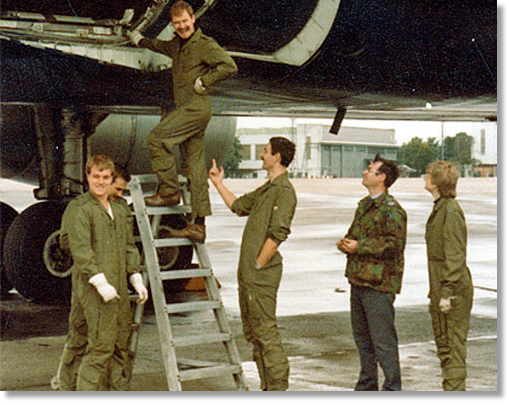
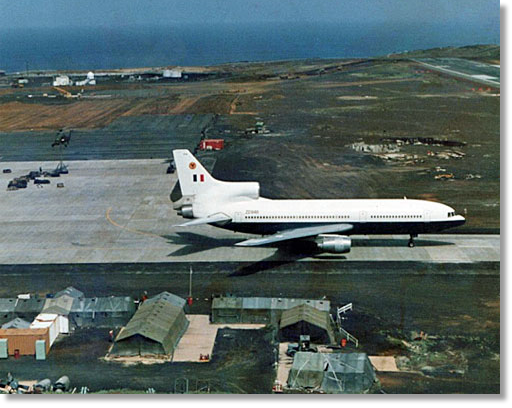
So, in late 1983 I was able to start dispatcher training for the RAF Movements Trade. Dominic, the BA Instructor, participated on the first two courses to check the standard of instruction and then passed back positive feedback. We were now cleared to handle the Tristars and BA 747s without BA supervision.
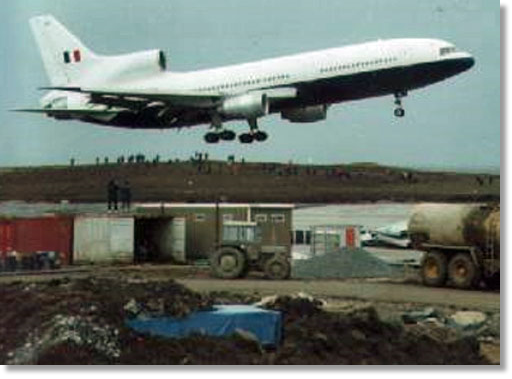
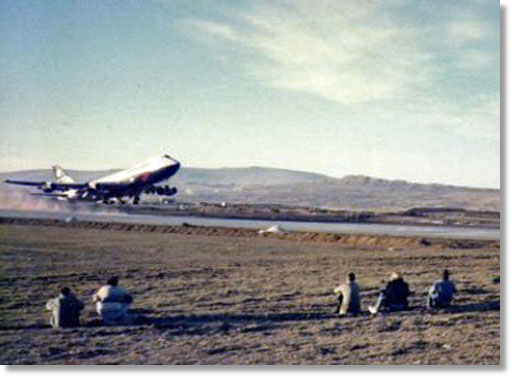
As time progressed and the first Loadmasters and Air Stewards appeared on the fleet, I ran an initial course for the first four loadmasters. They were a great bunch of guys too and I knew them all from previous tours on C130s or VC10s. Unlike the flight deck crew I had dealings with these guys bore no malice or upset at being trained by ground crew and made the training so much easier. In later years when I was back on mobile duties and carried out Tristar tasks I discovered the “front end, back end” mentality still existed. These are all just my own personal opinions and recollections.

I mentioned earlier about going metric, well these aircraft operated using kgs for weight, inches for length and fuel in US gallons! As time progressed the RAF procured its own handling equipment and the routes expanded. In 1986 the first Tanker aircraft appeared from Marshalls and the workload steadily increased. I will talk about the larger fleet sometime later.
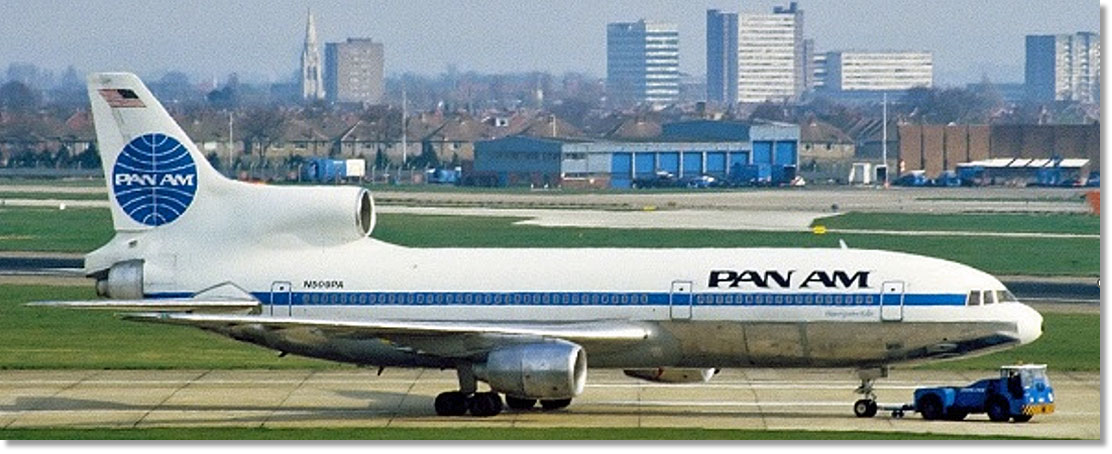
Subject: TriStars…
Hi Tony,
Following is an article I wrote for the U3A Aviation Group a while ago concerning TriStar Training. It is pertinent because of the recent comments by some members concerning the aircraft. I should have sent it to you prior to the last issue in response to Andy Spinks.
Andy was the SAMO of Brize at the time of the arrival of the TriStars and attended one of my first courses along with some of his staff. His writing was immaculate and he completed the final loadsheet exam totally correctly. However, as he no doubt remembers, I awarded him 99%. I 'docked' him a point as he failed to use 'continental crossed figure 7s' as that was a mandatory IATA requirement.
Please mention that this and some previously published articles were written for an aviation audience rather than Movers, otherwise at times it sounds like I am trying to teach people to 'suck eggs'.
Regards,
Ian


Subject: Souvenirs
Hi Tony,
My submission is of my dear old mate, the late and great Bob Turner. Back in the early 70’s we were in good old NEAF MAMS during it’s time in Akrotiri. It is at this point that I have to admit that I wasn’t present during this re-location of goods (trophy) that took place one evening in Limassol.
For those who don’t know, because of the amount of HM Forces that resided in Limassol, the streets were patrolled by HM Forces Military police, usually RAF White Caps or Army Red Caps.
On this particular evening, Bob was sitting outside a hostelry, taking in the evening air with a few mates when Mr Plod and Pongo Pete pulled up in an army Land Rover complete with lights and signs appropriate to all police vehicles. Bob, without a word, got up and walked across to the plod land rover, a quick glance over his shoulder to make sure the two cops were out of sight, and Bob undid the bolts and let the tail gate drop down, quickly slipped the chains and with this he disappeared from sight. Mr Plod and his mate returned quite hastily, jumped into the vehicle and to the horror of all now in the bar, fired up the engine.
Now we will never know how/why, but Mr Plod either checked his mirror or looked over his shoulder, but in a flash the driver switched the engine off and got out of the vehicle, saying “Where the chuffing hell is our tail gate gone?”
Looking down they were greeted with Bob, who, with his quick witted humour said, “Good evening officers, how are we tonight?”
To which came the proverbial reply, “You’re nicked mate!”
Bob was carted off with Laurel and Hardy, both looking pleased with themselves. Bob spent the night in the Polimeidia Military Police Station. As I recall, he ended up with a £10 fine for being drunk and disorderly (as it was in those days). It doesn’t end there, the next morning OC NEAF MAMS, Flt Lt Andy Wood, had us in at the crack of sparrows taking all our trophies down and under lock and key before the two plods arrived with Bob to get his punishment.
Cheers,
Keith


to the Memories of:
Vernon Steele (RCAF)
Richard Nadon (RCAF)
Robert "Bob" Clancy (RCAF)
ukmamsoba@gmail.com
If you wish to make a donation,
you may use the above e-mail
through PayPal.
.







